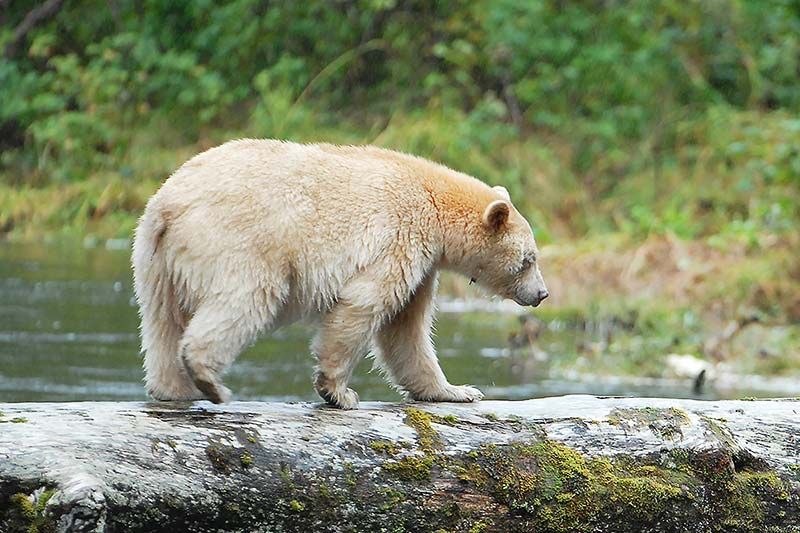Craig Bakay | Apr 03, 2019
Nikon ambassador Michelle Valberg was supposed to give a talk at GREC Saturday night, showing off her wildlife photographs.
However, with the weather calling for freezing rain and a flight scheduled for 6am to photograph Canada’s reindeer herd, Valberg had to beg off.
Luckily, the guy responsible for (almost) bringing her to Sharbot Lake has also taken quite a few wildlife photos, and it’s likely the insights he brought to the genre exceeded what a pure photographer might have had.
Gray Merriam, PhD, Dsc, Professor Emeritus, Landscape Ecologist, knows a thing or two about critters and the way they interact with their environment, and the audience didn’t seem to mind him filling in at the last minute.
“I used to do ecological research and live only 18 kilometers from Sharbot Lake,” he said.
Merriam’s lecture featured four photo shoots — polar bears in ‘Bear Town’ near Churchill, Manitoba, grizzly bears in Knight Inlet, B.C., ‘spirit’ bears in the Great Bear Rainforest in B.C. and painted hunting dogs in Botswana, Africa.
He began with polar bears.
“There are polar bear alert signs in the area,” he said. “A boulder covered in snow and a polar bear look quite similar but stepping on one gets very different results.”
He said the bears come ashore when the sea ice melts and they’re stuck there until it reforms, with very little to eat, so photographers have to load into a specialized ‘bear buggy’ to mingle with them.
“The time between the ice melting and reforming is getting longer and there’s not much food for the bears except seaweed,” he said. “It has very little nutritive value, except for something to chew on.”
He also had several shots of arctic foxes.
“They’re about the size of a large housecat,” he said. “The red foxes are moving north and are about twice the size of the arctic foxes.
“They prey on them.”
Next came the grizzlies of Knight Island.
“They’re having litters of three and four, which is the best indication that they’re doing well,” he said.
He said that “their ability to catch fish varies greatly” and the ones that are really good at it tend to eat only the “best parts — the roe and brains.” The bears that aren’t that good at fishing scoop up what’s left and drag them off into the woods.
“In this way they fertilize the forest,” he said.
Then came the highlight of the lecture — the Kermode bears, or spirit bears.
“These bears only exist on two islands,” he said. “They’re actually black bears with a genetic difference in that there’s no pigment in their hair.
“They’re not albinos as they do have pigment in their eyes.
“We were very lucky. Lots of people go there and never see a spirit bear. We got our fair share.”
Merriam finished up his talk with photos of the painted dogs of the Okavango Delta in Botswana.
“They have various patterns,” he said. “No two are ever alike.
“They’re about the size of a German shepherd, but with no body fat because they run all day, every day.”
He showed pictures of pups nipping at adults’ lips to make them regurgitate food for the pups as well as a number of other species in the area including leopards, crocodiles, lions, a serval, hippos, a bush baby and elephants.
More Stories
- Latest CUPW Job Action Stops Postal Delivery Of The Frontenac News Forcing Alternate Plans
- Opponents of Barbers Lake Gravel Pit Pack Ag Hall in McDonalds Corners
- Bobsleigh Olympian Jay Dearborn At Mikes Pizza In Sydenham
- The Loins Club Of and O'Lakes Roar
- North Frontenac Back Roads Studio Tour - September 27 and 28
- Sunday Market Vendors Give Back
- George Street Work As Town Hall Renovation Nears Completion
- One Way Street Plan Hits A Dead End - Central Frontenac Council, September 9
- Global Gardening
- No Winner Yet in Catch The Ace But Fundraising Target Met

